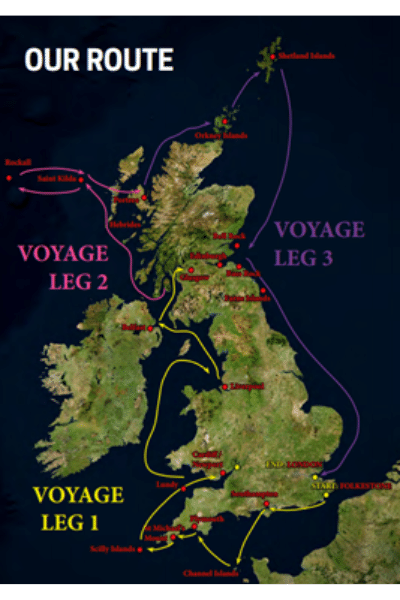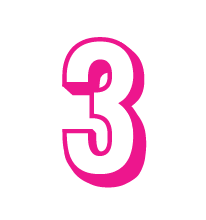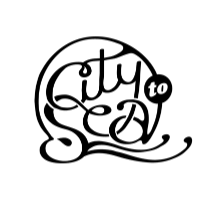UK WIDE PLASTICS
RESEARCH VOYAGE
Setting sail
This summer City to Sea embarked on what was possibly our biggest adventure yet – a 13-week voyage circumnavigating the UK on the beautiful tall ship, the Pelican of London to get a better understand of the scale of plastic pollution in UK waters. As a campaigning organisation, we want to know where the most polluting items are coming from and where they are ending up, so we can focus on tackling these items at source – taking the issue upstream to help keep our beautiful beaches, rivers and oceans clean for future generations.
After what’s been a rollercoaster 18 months, we were itching to get back out there into the world, stepping away from our screens and reconnecting with our mission to connect our actions to our oceans so all life can thrive. The voyage was part of an exciting partnership with environmental research organisation Darwin200 and Seas Your Future, a sail training charity which aims to empower young people and teach them sailing skills.
Setting sail from Folkstone in May, we travelled along the South Coast reaching the stunning Scilly Isles just off the coast of Cornwall before heading up to Bristol and then around the coast of Wales and on to Scotland. Here we spent several weeks exploring the remote Outer Hebrides, Orkney, Shetland before sailing around the very tip of the UK and down the east coast into London.
Over 3,000 miles covered
13 weeks on board
47 beaches surveyed

A FIRST OF ITS KIND RESEARCH PROJECT
This unique project enabled us to reach some of the UK’s most remote islands and busiest ports to better understand the sources, distributions and abundances of plastic pollution (and other types of marine litter) in UK waters.
PROJECT AIMS:
- To understand the distributions, abundances and sources of plastic pollution around the UK.
- To understand the prevalence of plastic pollution in MPA’s, MCZ’s, SAC’s and IFCA’s.
- Identify the presence of microplastics in marine environment (particularly in protected areas.)
Steph is currently a PhD candidate with the University of Southampton, the Project Director of Sea Sanctuaries Trust and chair of the IMarEST Marine Litter and Ocean Plastic Special Interest Group. With over ten years experience in marine conservation and environmental monitoring, Steph has developed a focus on researching the ecosystem level impacts of plastic pollution, as well as circular strategies and policy mechanisms to change our global plastics economy.
METHODOLOGY: WHAT WERE WE RESEARCHING?

MACRO PLASTICS: BEACH SURVEYS
The main focus for our research was to collect data on the types of marine litter found along the coastline. To do this we carried out systematic beach surveys which recorded the types of marine litter found, the location of the items we found on the beach and also the size of the items.

MICROPLASTICS: SEDIMENT SURVEYS
During our expedition we also collected sediment samples taken from the sea floor of various dive sites along our journey. These will be analysed back at the University of Southampton to find out if microplastics are making their way on to the ocean floor – particularly in such remote and protected locations.
Recent studies have found up to twice the amount of microplastics in ocean sediments than found in the surface waters. This makes sense, as most plastic sinks, but we still have very limited knowledge on the potential impact and levels of microplastics around UK ecosystems and this will provide a very unique, UK wide dataset.

MARINA & PORT SURVEYS
In collaboration with the Superyacht Clean Marina Campaign, we invited the harbourmaster from each site we visited to take part in a survey to help us understand the waste management facilities available in the various ports and marinas.
The adequacy of port reception facilities has been highlighted by policy actors as a serious global challenge in the process of responsibly dealing with waste from ships. Overall, we found it very challenging to find recycling facilities for the segregated waste we were producing onboard.

Image credits: Rohan Holt
THE RESULTS: WHAT DID WE LEARN?
Our team surveyed 47 different beaches along the voyage, just under half of which were in marine protected areas or areas of special interest indicating they were home to protected wildlife or unique ecosystems. Our initial findings have revealed some real results, with massive variations across the country. We’ll be crunching the data over the coming weeks and will share a full report soon!
Plastic fragments made up almost half of the items collected – these are tiny, often unidentifiable plastic pieces that have broken down from bigger pieces over time. These are carried by the ocean currents and are impacted by the tides and wind. These made the bulk of the plastic found even in extremely remote locations in Scotland.
Fishing gear, including items like ropes, nets and pots was the second most abundant – again with massive variations across the country. Across the voyage as a whole this made up 22% of the items we found but this went up to a shocking 60% in the North of Scotland (Orkney and Shetland). Here the beaches are exposed to the North Sea which is heavily fished, and the protected lochs are also home to salmon farms which often lie just off the coast. We’re going to be working to identify the nets we found to better understand where they are coming from and what can be done to tackle the issue.
We found much less single-use plastic than you would typically expect (global beach clean data is typically at around 50%), but this was likely due to the remote locations we were visiting. This was much higher in the south, were we visited much more touristy locations and also as you would expect close to large cities like Edinburgh, we found very little single-use plastic in the West Coast of Scotland.
6,536 pieces of marine litter found
45%
PLASTIC FRAGMENTS
22%
FISHING GEAR (NETS OR ROPES)
9%
SINGLE-USE PLASTIC
24%
OTHER MATERIALS*
*(glass, ceramics, metal, cardboard or clothes)
RECONNECTING WITH THE OCEANS
We were beyond lucky to get to see some of the UK’s most enigmatic and illusive wildlife – from puffins and gannets, to Minke whales and even Orca! Being able to spend so much time exploring our beautiful coast line and feel so connected to all the amazing wildlife we have right here in the UK has served as an even bigger drive for us to keep doing what we do and campaigning to keep our oceans plastic free.
Sadly, we also experienced first-hand the impact that marine pollution can have on wildlife – even in remote locations, particularly from fishing gear such as rope and nets (which were also some of the most commonly found items). We’ll be using the data we collected to feed into campaigns to help tackle these important issues – watch this space!

Image credits: Rohan Holt
FULL REPORT COMING SOON!
Our goal for the voyage was not just to get a post-covid insight into the current state of our oceans, but to share what we find with the world. Re-engaging the public and highlighting the direct link between our everyday actions, and the plastic we all use, with the impact on our ocean. We’ll be sharing a full remote of our findings in the coming weeks and months.
In the meantime, check out our stories on Instagram to find out what you missed.

